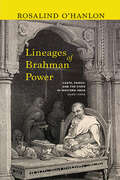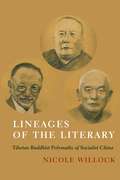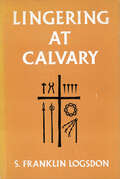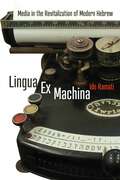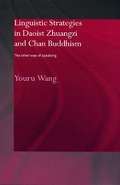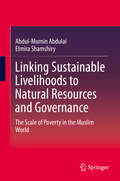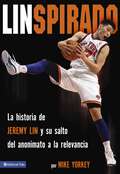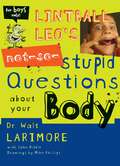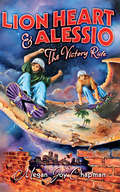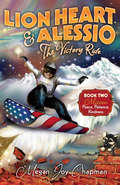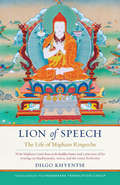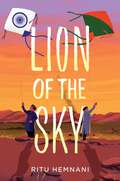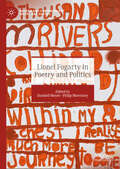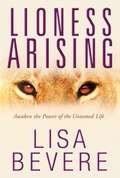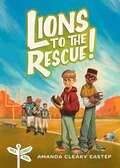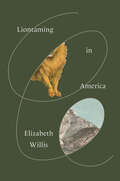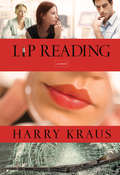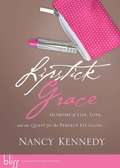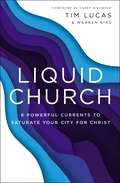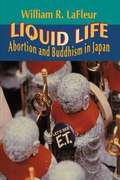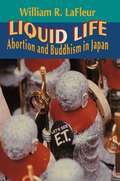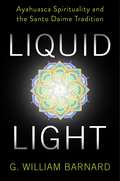- Table View
- List View
Lineages of Brahman Power: Caste, Family, and the State in Western India, 1600–1900 (SUNY series in Hindu Studies)
by Rosalind O'HanlonTraces the role that western India's influential Brahman communities played in shaping India's modern caste system.Western India's Brahman communities have played a key role in the shaping of India's modern caste system. In Lineages of Brahman Power, Rosalind O'Hanlon focuses on their rise to power between the seventeenth and nineteenth centuries, exploring the ways in which some Brahman intellectuals sought to defend the hierarchies of caste against the social changes of the early modern era while others looked for compromise. Drawing on Marathi vernacular sources, O'Hanlon also examines the household, family, and lineage as key sites for Brahman accumulation of skills and cultural capital. This approach also reveals Brahman identity itself as contested, as Brahman subcastes competed with each other not only for service positions and state patronage but also to define who could actually be considered a Brahman, and of what kind. This focus on Brahman social history is novel, in that most historians focus on Brahman power as emerging out of their religious prestige and dominance of intellectual and literary cultures. The emphasis on Brahman identity itself as complex and internally contested also helps to avoid essentializing Brahman power as always and everywhere the same.
Lineages of the Literary: Tibetan Buddhist Polymaths of Socialist China
by Nicole WillockIn the aftermath of the cataclysmic Maoist period, three Tibetan Buddhist scholars living and working in the People’s Republic of China became intellectual heroes. Renowned as the “Three Polymaths,” Tséten Zhabdrung (1910–1985), Mugé Samten (1914–1993), and Dungkar Lozang Trinlé (1927–1997) earned this symbolic title for their efforts to keep the lamp of the Dharma lit even in the darkest hour of Tibetan history.Lineages of the Literary reveals how the Three Polymaths negotiated the political tides of the twentieth century, shedding new light on Sino-Tibetan relations and Buddhism during this turbulent era. Nicole Willock explores their contributions to reviving Tibetan Buddhism, expanding Tibetan literary arts, and pioneering Tibetan studies as an academic discipline. Her sophisticated reading of Tibetan-language sources vivifies the capacious literary world of the Three Polymaths, including autobiography, Buddhist philosophy, poetic theory, and historiography. Whereas prevailing state-centric accounts place Tibetan religious figures in China in one of two roles, collaborator or resistance fighter, Willock shows how the Three Polymaths offer an alternative model of agency. She illuminates how they by turns safeguarded, taught, and celebrated Tibetan Buddhist knowledge, practices, and institutions after their near destruction during the Cultural Revolution.An interdisciplinary work spanning religious studies, history, literary studies, and social theory, Lineages of the Literary offers new insight into the categories of religion and the secular, the role of Tibetan Buddhist leaders in modern China, and the contested ground of Tibet.
Lines of a Layman
by J. C. PenneyThe history of America’s commercial growth is highlighted with the names of a few great men whose contributions to their nation have far transcended ability in business, manufacturing and industry. Elbert Hubbard, John Wanamaker—these men were merchant princes in one sense, leaders of thought and belief in another. Through their autobiographical writings and essays, they have given us a rich, poignant, inspiring picture of their fruitful lives and careers. Their words point the way to meaningful, creative, productive and brotherly living.Such a man is J. C. Penney, at once the most successful of our times in business enterprise, and the most inspiring in his personal example of courage, wisdom, and service to fellow men and to God.Faith and fellowship are no mere Sunday things in J. C. Penney’s philosophy. You find a twenty-four-hour-a-day, seven-day-a-week code of Christian living in such pieces as his Six Principles for Daily Living, The Four Square Man, and The Christian and the Social Order. They are “the measure of the man.”You will find LINES OF A LAYMAN more than a book to read, although its almost 200 thoughtful vignettes are fascinating, swift-paced and stimulating. You will find that it is a book to use, even a book to live by. Its pages are charged with meaning; one cannot read them without finding new ways to happiness and creativity.
Lingering at Calvary
by S. Franklin LogsdonYears ago a large painting of the cruxifixion was lent to a Midwestern city for exhibition during the Easter season. Space in a department store was set aside for the exquisite work which finally was recessed in yards and yards of rich, dark blue velvet. Approximately a hundred chairs were placed at a distance from the picture for the public to view it during business hours. You could step inside that enclosed space at any hour of the day and find people sitting and standing in absolute silence as they gazed at the scene before them. The awe and worshipful reverence of the spectators can be described best by saying they could be felt.Remembrance of that place and picture can be relived in the content of Lingering at Calvary. How could the author forbear to do anything else than employ fully his gift of words in applying one brushful after another to the Calvary scene! He wants to stop readers who live much of their lives in this noncontemplative age of rush, pleasure, and ungodliness—stop them, make them sit or stand for a time in the absolute, tearful silence of sheer gratitude.
Lingering at Calvary
by S. Franklin LogsdonYears ago a large painting of the cruxifixion was lent to a Midwestern city for exhibition during the Easter season. Space in a department store was set aside for the exquisite work which finally was recessed in yards and yards of rich, dark blue velvet. Approximately a hundred chairs were placed at a distance from the picture for the public to view it during business hours. You could step inside that enclosed space at any hour of the day and find people sitting and standing in absolute silence as they gazed at the scene before them. The awe and worshipful reverence of the spectators can be described best by saying they could be felt.Remembrance of that place and picture can be relived in the content of Lingering at Calvary. How could the author forbear to do anything else than employ fully his gift of words in applying one brushful after another to the Calvary scene! He wants to stop readers who live much of their lives in this noncontemplative age of rush, pleasure, and ungodliness—stop them, make them sit or stand for a time in the absolute, tearful silence of sheer gratitude.
Lingua Ex Machina: Media in the Revitalization of Modern Hebrew (Jewish Culture and Contexts)
by Ido RamatiAn investigation of the connections between the parallel rise of modern Hebrew and modern mediaAfter lying dormant for two millennia as a mainly written language, Hebrew awoke from its literary slumber to become a living modern vernacular. This revitalization is unique and unprecedented in world history, and its success has been studied in fields from linguistics to cultural history. However, the role of modern technologies in mediating this revival has not yet been considered.What happens when an ancient language meets modern technology? Lingua Ex Machina explores such a moment in its investigation of the role media technologies—including typewriters, phonographs, and computers—played in the revitalization and modernization of Hebrew from the end of the nineteenth century into the present day.Ido Ramati examines the role sound recording technologies played in shaping the reemergence of modern Hebrew speech, reveals how the Hebraized typewriter pushed for the modernization of writing in Hebrew, and ultimately argues that these media—whose development and adoption paralleled the revitalization of Hebrew—were an active force in shaping the language as a modern communicative medium. This case study of Hebrew furnishes researchers with a rare opportunity to investigate the complex relation between language, its speakers, and technology at a decisive moment, and sheds new light on the study of media technologies and their theoretical, lingual, and social implications.
Linguistic Strategies in Daoist Zhuangzi and Chan Buddhism: The Other Way of Speaking
by Youru WangAs the first systematic attempt to probe the linguistic strategies of Daoist Zhuangzi and Chan Buddhism, this book investigates three areas: deconstructive strategy, liminology of language, and indirect communication. It bases these investigations on the critical examination of original texts, placing them strictly within soteriological contexts. Whilst focusing on language use, the study also reveals some important truths about these two traditions and challenges many conventional understandings of them. Responding to recent critiques of Daoist and Chan Buddhist thought, it brings these two traditions into a constructive dialogue with contemporary philosophical reflection. It discovers Zhuangzian and Chan perspectives and sheds light on issues such as the relationship between philosophy and non-philosophy, de-reification of words, relativising the limit of language, structure of indirect communication, and use of paradox, tautology and poetic language.
Linking Sustainable Livelihoods to Natural Resources and Governance
by Abdul-Mumin Abdulai Elmira ShamshiryThis book investigates the current level and trend of poverty in the Muslim World, including selected countries in Africa, the Middle East and Central Asia, East Asia, the Pacific and South America. Authors explore themes of poverty reduction, poverty alleviation and the extent of influences on social and economic development, particularly natural resource endowments (especially mineral resources) and their utilization. Chapters explore theory and practice, including governance and programmes, and take a detailed look at Zakat as a faith-based policy tool, to reduce poverty and improve livelihoods and thus contribute to better environmental stewardship. The final chapters look at development questions in the Muslim World and make policy recommendations, including a proposed multi-dimensional development collaboration model called the Development Collaboration Octagon Model (DeCOM). Readers will discover theoretical explanations of poverty and how poverty hampers the development of many nations because the poor are unable to partake actively in the development process. Poverty indicators and measurement are discussed, and trends of economic growth including productivity, manufacturing, trade patterns, investment and saving activity, and socio-economic developments are all explored: supporting data is presented in tables and figures, throughout this text. Authors explore the potency and success stories of public poverty alleviation strategies and programmes pursued in the Muslim world, especially the extent to which the institution of Zakat has been effectively incorporated into public poverty alleviation strategies. Policy options required to enhance social and economic development are proposed, to help pull the poor out of the poverty trap into the mainstream economy in the Muslim world. This work will appeal to anyone wishing to scrutinise poverty, its parameters and its relationship with the development of countries in the Muslim world. Scholars in the fields of economics, sociology, geography and Islamic studies will all find something of value here.
Linspired: The Remarkable Rise of Jeremy Lin
by Mike YorkeyLinspired reveals the remarkable journey of the ultimate underdog, Jeremy Lin, superstar of the New York Knicks and the first American-born player of Chinese/Taiwanese descent to play in the NBA. In spite of being cut by two NBA teams before he signed with the Knicks, Lin always trusted that God had a plan for his life and his talents: "I'm not exactly sure how it is all going to turn out, but I know for a fact that God has called me to be here now in the NBA," says Lin in Linspired. After weeks of sitting at the end of the bench, a teammate’s injury finally placed Lin on the court. Since then, he has captivated sports fans throughout the world with his tremendous skill and humble response to “Linsanity.” Weighing in on this phenomenon are tennis’s Michael Chang, the first notable Asian-American athlete, Lin’s pastor, Stephen Chen, and Pat Williams, senior vice president of the Orlando Magic. Other features include eight pages of full-color photos and in-depth interviews with Lin himself. Here is the remarkable inside story of the meteoric rise of Jeremy Lin.
Lintball Leo's Not-So-Stupid Questions About Your Body
by John Riddle Walt Larimore“Everything a boy should know, but won’t ask!” Finally, everything you wanted to know about your body, but you’ve just been too chicken to ask. Lintball Leo’s Not–So-Stupid Questions About Your Body is the first book for boys that gives honest answers to real questions about your body from a biblical perspective. No, you’re not falling apart—you’re just growing up! But there’s no need to fear, when Lintball Leo is near. He’s your personal guide to understanding your body. With information about everything from steroid use to body parts, there’s not a question Lintball Leo hasn’t heard. These aren’t questions some adult made up, but they’re real questions asked by real boys just like you. You want to know the truth? Now you can, because Lintball Leo’s Not–So-Stupid Questions About Your Body gives you the facts—no holds barred! Through imaginative and innovative products, Zonderkidz is feeding young souls.
Lion Heart & Alessio (Lion Heart & Alessio Series #1)
by Megan Joy ChapmanAll of Jed&’s plans go up in smoke when he learns that Mak is moving with his family across the globe to Greece. Jed&’s devastation over Mak&’s move quickly turns to adventure when he and Mak both receive a very special visit from someone who leaves with a treasure chest that will change their lives. Join these cousins and best of friends—also known as Lion Heart and Alessio—as they embark on adventures they never could have imagined.
Lion Heart & Alessio Book 2: Mission, Peace, Patience, Kindness (Lion Heart & Alessio Series #2)
by Megan Joy ChapmanGET READY FOR FLIPS! It's time for another Lion Heart and Alessio adventure Jed and Mak are back—and things are about to get a little crazy again! The supercool cousins are off on another set of wild adventures as they transform once more into unlikely superheroes Lion Heart and Alessio. Though armed with special powers, they must rely on God to make wise choices as they undertake a series of tough assignments. Join them as they set out to help family members, learning about peace, patience, kindness—AND GOD&’S BIG LOVE.
Lion of Speech: The Life of Mipham Rinpoche
by Dilgo Khyentse Jamgon MiphamA traditional biography on the life of Mipham Rinpoche--one of the greatest 19th-century masters--from Dilgo Khyentse Rinpoche, one of the greatest 20th-century masters.The first half of this volume comprises the first-ever English translation of the biography of Mipham Rinpoche written by Dilgo Khyentse Rinpoche, a teacher to His Holiness the Dalai Lama as well as an entire generation of other teachers and students throughout the Himalayan region and the West. Composed in 1939, it was left behind in Tibet in 1959 when Khyentse Rinpoche went into exile and was lost for fifty-one years before its discovery in 2010 by an extraordinary stroke of good luck. Reverential in tone, it is informed by both oral accounts preserved in notes kept by Khyentse Rinpoche's elder brother and the recollections of Mipham's devoted personal attendant of thirty-seven years.In keeping with the identification of Mipham as an emanation of Manjushri, the lion of speech, the second half comprises a selection of Mipham's writings, designed to give the reader an experience of Mipham's eloquent speech and incisive thought. It includes both a new translation of The Lion's Roar: A Comprehensive Discourse on the Buddha-Nature and A Lamp to Dispel the Dark, a teaching of the Great Perfection, as well as excerpts from previously published translations of his works on Madhyamaka and tantra.
Lion of the Sky
by Ritu HemnaniAn evocative historical novel in verse about a boy and his family who are forced to flee their home and become refugees after the British Partition of India. Perfect for fans of Other Words for Home. Twelve-year-old Raj is happiest flying kites with his best friend, Iqbal. As their kites soar, Raj feels free, like his beloved India soon will be, and he can’t wait to celebrate their independence.But when a British lawyer draws a line across a map, splitting India in two, Raj is thrust into a fractured world. With Partition declared, Hindu, Sikh, and Muslim families are torn apart—and Raj’s Hindu and Iqbal’s Muslim families are among them.Forced to flee and become refugees, Raj’s family is left to start over in a new country. After suffering devastating losses, Raj must summon the courage to survive the brutal upheaval of both his country and his heart.Inspired by the author’s true family history, Lion of the Sky is a deeply moving coming-of-age tale about identity, belonging, and the power of hope.
Lionel Fogarty in Poetry and Politics (Modern and Contemporary Poetry and Poetics)
by Dashiell Moore Philip MorrisseySince the publication of his first poetry collection Kargun in 1980, Lionel Fogarty has produced some of the most complex, playful and strident poems written in English, and has been regarded by some as the greatest Aboriginal Australian poet of his generation. While over the course of his career, Fogarty has had relatively little recognition in awards or grants, recent attention to his work suggests a new turn in how his poetry is read and understood in Australia and overseas. Emerging from these conversations, Lionel Fogarty in Poetry and Politics illuminates the craft and art of Fogarty’s poetry in hand with his political activism in order to open his work for new readers and researchers. Bringing together a wide range of critical and creative voices in the first book-length study of Fogarty’s work, this essay collection represents a landmark moment for the study of Indigenous studies, poetry and poetics, Australian literature, and for future work on Fogarty’s poetry.
Lioness Arising
by Lisa BevereAwaken.The lioness rises from her slumber, a magnificent image of strength, passion, and beauty. Her mere presencecommands the landscape, protects her young, and empowers the lion. In groups, lionesses become a creative and strategic force to be reckoned with, acting as one to change the world around them.You too are a lioness.In Lioness Arising, author and speaker Lisa Bevere offers the life and image of the lioness as a fierce and tender model for women. Revealing the surprising characteristics of this amazing creature, Lisa challenges women to discover fresh passion, prowess, and purpose.Learn what it means to:* be a stunning representation of strength* fiercely protect the young* lend your voice to the silenced* live in the light and hunt in the dark* raise a collective roar that changes everythingPacked with remarkable insights from nature and a rich depth of biblical references to lionesses, Lioness Arising is a call for women to rise up in strength and numbers to change their world.Jesus is, after all, the lion of the Tribe of Judah.We are his lioness arising.From the Hardcover edition.
Lions to the Rescue!: Tree Street Kids (Book 3)
by Amanda Cleary EastepBook Three in the Tree Street Kids SeriesIf getting tackled is the best way to make new friends, that&’s okay with Jack. After all, starting fifth grade at a new school is even rougher than pee wee football. But how can he join the Lions and help Ellison build the Most Epic Bookmobile Bike Ever? Jack devises the perfect game plan–until he fumbles it with the most epic bike crash ever and a game day disaster.
Lions to the Rescue!: Tree Street Kids (Book 3)
by Amanda Cleary EastepBook Three in the Tree Street Kids SeriesIf getting tackled is the best way to make new friends, that&’s okay with Jack. After all, starting fifth grade at a new school is even rougher than pee wee football. But how can he join the Lions and help Ellison build the Most Epic Bookmobile Bike Ever? Jack devises the perfect game plan–until he fumbles it with the most epic bike crash ever and a game day disaster.
Liontaming in America
by Elizabeth WillisA spiraling, staggering new collection of historical and mythic reinvention (and Elizabeth Willis’s first book with New Directions) “To disrupt the relationship of predator and prey, to reshape one’s relation to power, is to renovate the lived and living world,” Elizabeth Willis writes in her visionary work that delves deep into the ancient enchantments and disciplinary displays of the circus. Liontaming in America investigates the utopian aspirations fleetingly enacted in the polyamorous life of a nineteenth-century Mormon community, interweaving archival and personal threads with the histories of domestic labor, extraction economies, and the performance of family in theater, film, and everyday life. Lines reverberate between worldliness and devotion, between Peter Pan and Close Encounters, between Paul Robeson and Maude Adams, between leaps of faith and passionate alliances, between everyday tragedy and imaginative social possibility. As Willis writes in her afterword to the book, “The repeated unmaking and remaking of America, as a concept and as an ongoing textual project, is not impossible. It is happening all the time.”
Lip Reading
by Harry KrausShe Could Save Millions, or Save Herself She just needs a little longer. She's really close. Dr. Rebecca Jackson, a medical researcher, stands on the verge of a breakthrough that will transform medicine. But she soon discovers the reason behind the miraculous progress in her research, and it leaves her with a nearly impossible choice . . . and little time to decide. More than her research is at stake. And more threatens it than this latest revelation. Something she's tried hard to cover up. There is a high cost to some things in medicine and it's not always the patient who pays. Can Rebecca find the faith and wisdom she needs to make the right call? The clock is ticking and the pressure is on.
Lipstick Grace
by Nancy KennedyThe Just-Right Shade of Grace Hmmm…. Kissable Kiwi or Fire Engine Red? To hold your child tight like you desperately want to, or let him go like he needs? Every woman grapples with such life issues and intangibles as faith, mercy, grace, and hope…but few have the ability to dress theology in blue jeans and flip-flops like Nancy Kennedy. A compilation of witty weekly columns written by Nancy for theCitrus County Chroniclein Florida,Lipstick Gracecontains many musings–not all of which wrap up in nice, neat packages (because the important things in life rarely do!). In this reflective collection, you’ll find the sufficiency of God holding you steady. It’s big enough forallof you: your greatest fears, your deepest doubts, and your bathroom drawer full of all the wrong shades of lipstick. From the Trade Paperback edition.
Liquid Church: 6 Powerful Currents to Saturate Your City for Christ
by Tim Lucas Warren BirdIn today's fluid culture, many churches are adrift--longing to reach spiritually thirsty people, but failing to make an impact. Have you noticed? Congregations are stuck or declining. Millennials and Gen Z are walking away. Volunteers and their generosity are drying up. Is your city, town, or neighborhood spiritually dry? Do you long to see more of the living water of Jesus flowing freely through your community, generating a fresh wave of ministry momentum? Buckle up: you're in for a whitewater ride! Liquid Church tells the fascinating story of a New Jersey church that began "on accident" and grew into one of America's 100 Fastest-Growing Churches, with over 5,000 in weekly attendance and more than 2,400 baptisms to date. Their secret? They harnessed the power of six powerful ministry currents sweeping across North America including: special needs, creative communication, ministry mergers, compassionate cause, radical generosity, and leadership development. With powerful stories and scriptural insights, backed by national research, Tim Lucas and Warren Bird describe dozens of fresh ideas, new ministry wineskins, and hard-won leadership learnings that resonate with rising generations in today's "show-then-tell" culture. Each chapter includes practical tools, real-life examples, and links to "Other Churches Making Waves" with cutting-edge ministry ideas designed to help saturate your city for Christ. Ready to dive deeper? Whether you serve a brand-new church plant, fast-growing congregation, or an aging ministry ready for reinvention, Liquid Church is an inspiring and practical guide for leaders ready to reach their spiritually thirsty neighbors--those who have given up on church, but haven't given up on God.
Liquid Life: Abortion And Buddhism In Japan
by William R. LafleurWhy would a country strongly influenced by Buddhism's reverence for life allow legalized, widely used abortion? Equally puzzling to many Westerners is the Japanese practice of mizuko rites, in which the parents of aborted fetuses pray for the well-being of these rejected "lives. " In this provocative investigation, William LaFleur examines abortion as a window on the culture and ethics of Japan. At the same time he contributes to the Western debate on abortion, exploring how the Japanese resolve their conflicting emotions privately and avoid the pro-life/pro-choice politics that sharply divide Americans on the issue.
Liquid Life: Abortion and Buddhism in Japan
by William R. LaFleurWhy would a country strongly influenced by Buddhism's reverence for life allow legalized, widely used abortion? Equally puzzling to many Westerners is the Japanese practice of mizuko rites, in which the parents of aborted fetuses pray for the well-being of these rejected "lives." In this provocative investigation, William LaFleur examines abortion as a window on the culture and ethics of Japan. At the same time he contributes to the Western debate on abortion, exploring how the Japanese resolve their conflicting emotions privately and avoid the pro-life/pro-choice politics that sharply divide Americans on the issue.
Liquid Light: Ayahuasca Spirituality and the Santo Daime Tradition
by G. William BarnardThe Santo Daime is a syncretic religion that arose in the Amazon region of Brazil in the middle of the twentieth century and now has churches throughout the world. Its spiritual practice is based around the sacramental use of ayahuasca, a psychedelic brew consumed only within regular ceremonies. In Liquid Light, G. William Barnard—an initiate of the religion and a scholar of religious studies—considers the religious practice and transformative inner experiences of the Santo Daime community.Immersing readers in his own journeys into nonordinary states of consciousness, Barnard provides a vivid as well as introspective depiction of the dramatic ritual and visionary worlds that a practitioner of this tradition encounters. He combines striking first-person accounts of the ritual life of the Santo Daime with accessible examinations of the psychological and philosophical significance of mystical states and mediumship. Bridging insider and outsider perspectives on religious experience, Barnard demonstrates how the Santo Daime offers its practitioners a transformative and profoundly illuminating spiritual path. Liquid Light also reflects on the broader implications of psychedelics, arguing that entheogenic religions can shed light on a wide range of key philosophical questions concerning consciousness, selfhood, and reality.
